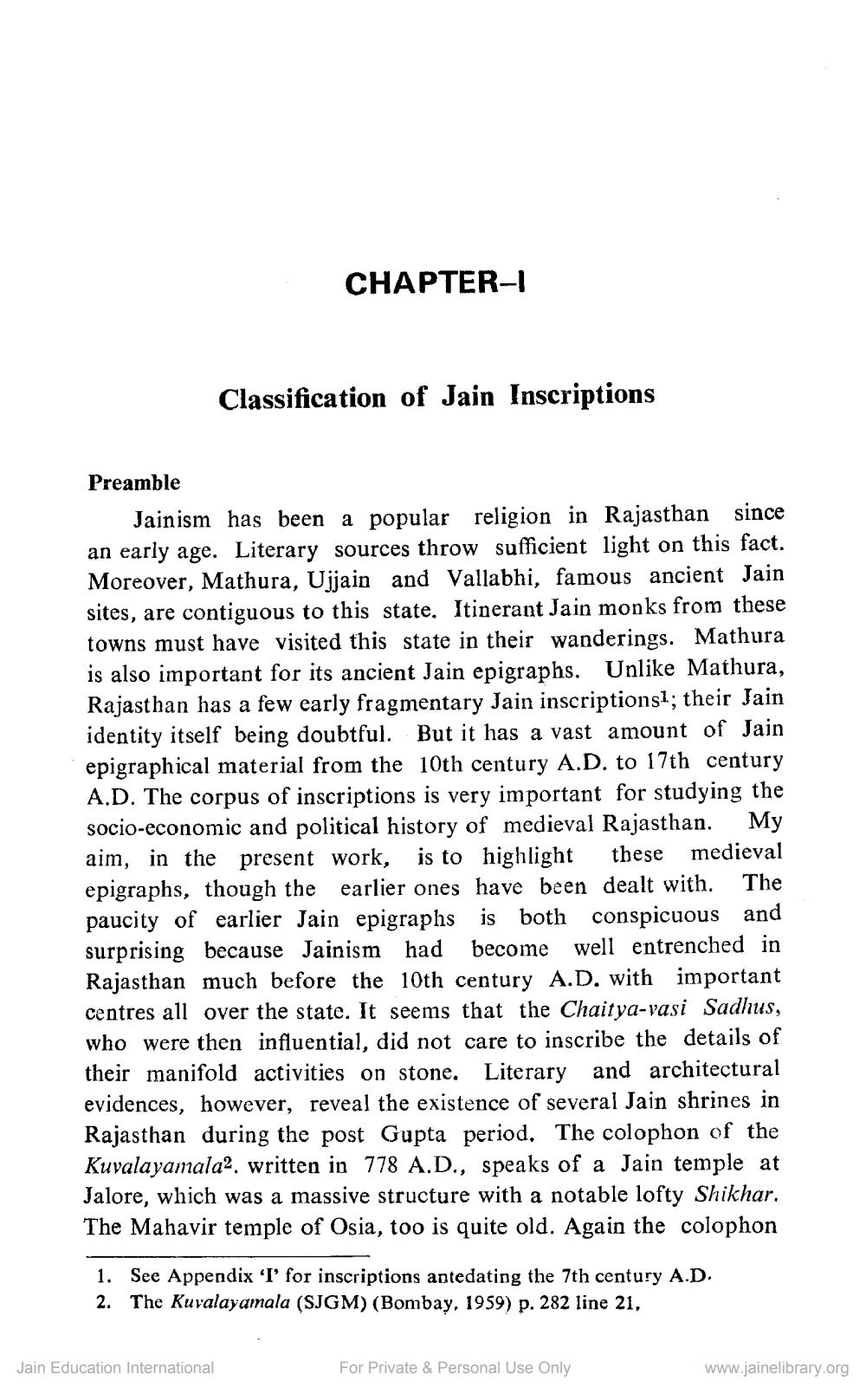________________
CHAPTER-1
Classification of Jain Inscriptions
Preamble
Jainism has been a popular religion in Rajasthan since an early age. Literary sources throw sufficient light on this fact. Moreover, Mathura, Ujjain and Vallabhi, famous ancient Jain sites, are contiguous to this state. Itinerant Jain monks from these towns must have visited this state in their wanderings. Mathura is also important for its ancient Jain epigraphs. Unlike Mathura, Rajasthan has a few early fragmentary Jain inscriptionsł; their Jain identity itself being doubtful. But it has a vast amount of Jain epigraphical material from the 10th century A.D. to 17th century A.D. The corpus of inscriptions is very important for studying the socio-economic and political history of medieval Rajasthan. My aim, in the present work, is to highlight these medieval epigraphs, though the earlier ones have been dealt with. The paucity of earlier Jain epigraphs is both conspicuous and surprising because Jainism had become well entrenched in Rajasthan much before the 10th century A.D. with important centres all over the state. It seems that the Chaitya-vasi Sadhus, who were then influential, did not care to inscribe the details of their manifold activities on stone. Literary and architectural evidences, however, reveal the existence of several Jain shrines in Rajasthan during the post Gupta period. The colophon of the Kuvalayamala2. written in 778 A.D., speaks of a Jain temple at Jalore, which was a massive structure with a notable lofty Shikhar. The Mahavir temple of Osia, too is quite old. Again the colophon
1. See Appendix 'I' for inscriptions antedating the 7th century A.D. 2. The Kuvalayamala (SJGM) (Bombay, 1959) p. 282 line 21,
Jain Education International
For Private & Personal Use Only
www.jainelibrary.org




